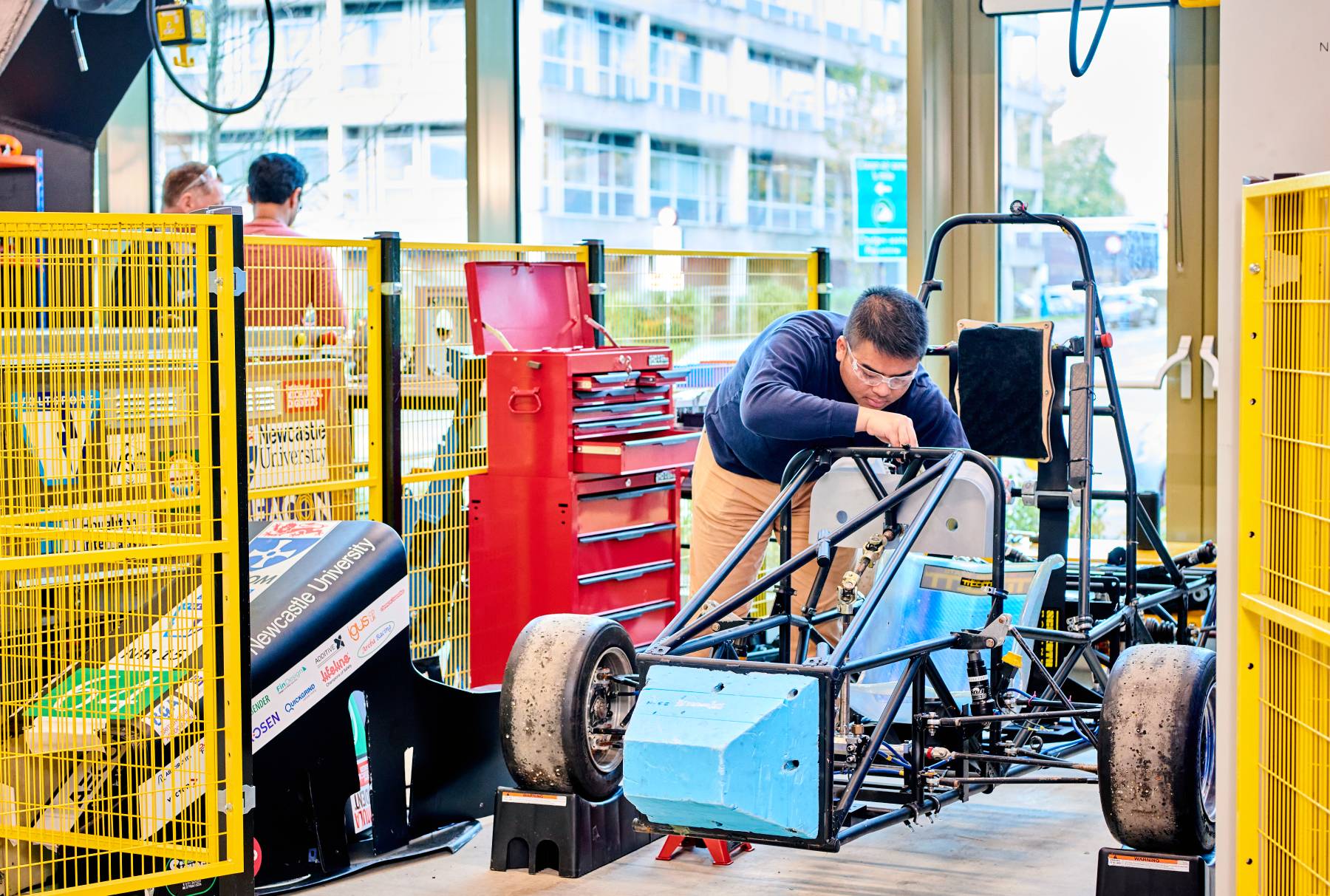CME8415: Process Intensification and Catalysis
- Offered for Year: 2025/26
- Module Leader(s): Professor Adam P Harvey
- Owning School: School of Engineering
- Teaching Location: Newcastle City Campus
Semesters
Your programme is made up of credits, the total differs on programme to programme.
| Semester 1 Credit Value: | 20 |
| ECTS Credits: | 10.0 |
Aims
This module aims to provide an overview of approaches available to improve the efficiency of chemical processes. This includes catalysis and process intensification. Catalysis is ubiquitous in the chemical industry and responsible for almost all chemicals produced at scale in some way.
Process Intensification deals with novel, radically different technologies which have the potential to revolutionize the way chemical plants are designed and operated. The ultimate aim of Process Intensification methods is to reduce the size of process plants by orders of magnitude.
Other typical benefits stemming from this reduction in size include:
- Enhanced safety
- Reduced environmental footprint
- Improved product quality
- More responsive processing
All of these advantages are discussed and exemplified by case studies within the module.
This module will:
- Introduce different types of catalysis commonly used industrially;
- Provide an understanding of the concept of Process Intensification and of the application of a variety of intensification techniques to numerous applications;
- Provide an understanding of basic operating principles of a variety of intensified process equipment such as spinning disc reactors, rotary packed beds, oscillatory baffled reactors, compact heat exchangers and micro-reactors;
- Allow student be apply knowledge to unit operation design, and evaluate the resultant designs;
- Allow students to analyse systems for opportunities for PI/new technologies.
Outline Of Syllabus
- Review of fundamentals of chemical kinetics and reactors
- Theory of catalysis and applications
- Characterisation of catalytic systems
- Definition of Process Intensification (PI). Origin of PI. Benefits of PI. Methods of achieving PI in general, with specific examples/case studies. Barriers and opportunities. Target industries.
- Oscillatory baffled reactor (OBR). Description & operating principles. History. Explanation of niche applications. Design. Case studies.
- Spinning disc reactor (SDR): Operating principle and development of models for thin film flow on rotating disc. Examples of application of SDR to a range of processes.
- Rotary packed bed (RPBs): Operating principle of rotating contactors. Development of models for counter-current multiphase flow in rotating systems. Examples of the application of multiphase contactors.
- Compact heat exchangers (CHE): Definition of CHEs. Construction and main properties. Applications. Basic design procedures. Examples.
- Micro-reactors: Description and operating principles. Heat transfer, mass transfer and mixing applications.
Learning Outcomes
Intended Knowledge Outcomes
At the end of the module, students should be able to:
- Appraise reaction kinetics appropriate to particular catalytic systems
- Assess appropriate characterisation techniques for catalytic systems and describe their operating principle
- Evaluate the concept of Process Intensification and the methodologies for PI
- To appreciate the benefits of PI in the process industries
- Understand the operating principles of a number of intensified technologies such as the spinning disc reactor, the rotating packed bed, the oscillatory flow reactor, the compact heat exchanger and the microreactor.
- Appreciate the range of potential applications of the above-mentioned intensified equipment (AHEP4 M13).
Intended Skill Outcomes
At the end of the course, students should be able to:
- Design equipment capable of intensifying conventional processes (AHEP4 M1, M5).
- Recommend suitable catalysts for sustainable process
- Problem Solving skills
Teaching Methods
Teaching Activities
| Category | Activity | Number | Length | Student Hours | Comment |
|---|---|---|---|---|---|
| Scheduled Learning And Teaching Activities | Lecture | 16 | 1:00 | 16:00 | Lectures |
| Scheduled Learning And Teaching Activities | Small group teaching | 6 | 1:00 | 6:00 | Tutorials |
| Scheduled Learning And Teaching Activities | Workshops | 4 | 2:00 | 8:00 | Workshops |
| Scheduled Learning And Teaching Activities | Drop-in/surgery | 8 | 1:00 | 8:00 | Drop-in Sessions |
| Guided Independent Study | Assessment preparation and completion | 1 | 45:00 | 45:00 |
Revision and completion of Examination |
| Guided Independent Study | Assessment preparation and completion | 1 | 30:00 | 30:00 |
Preparation and completion of presentation |
| Guided Independent Study | Independent study | 1 | 87:00 | 87:00 |
Preparation for tutorials and reviewing lecture material |
| Total | 200:00 |
Teaching Rationale And Relationship
Basic concepts are introduced and developed in lectures and reinforced by tutorials on each section of the course. Case studies from lecturers’ own research reinforce the material developed throughout. Tutorial classes are used to develop problem solving skills including design and case studies of technology applications.
Assessment Methods
The format of resits will be determined by the Board of Examiners.
Other Assessment
| Component | Semester | When Set | Percentage | Comment |
|---|---|---|---|---|
| Oral Examination 1 | 1 | M | 50 | Presentation on catalytic systems. Small groups, 10-15 min per group depending on student numbers plus 10 min for questions. |
Exams
| Component | Length | When Set | Percentage | Comment |
|---|---|---|---|---|
| Written Examination 1 | 180 | M | 50 | Written Exam on Process Intensification Topics |
Assessment Rationale And Relationship
The examination will test knowledge acquired and also problem solving in a timed environment. The examination will cover the process intensification section of the course.
The presentation will assess students’ ability to apply knowledge and skills to an open-ended problem related to catalysis, and defend their solution.
Timetable
- Timetable Website: www.ncl.ac.uk/timetable/
